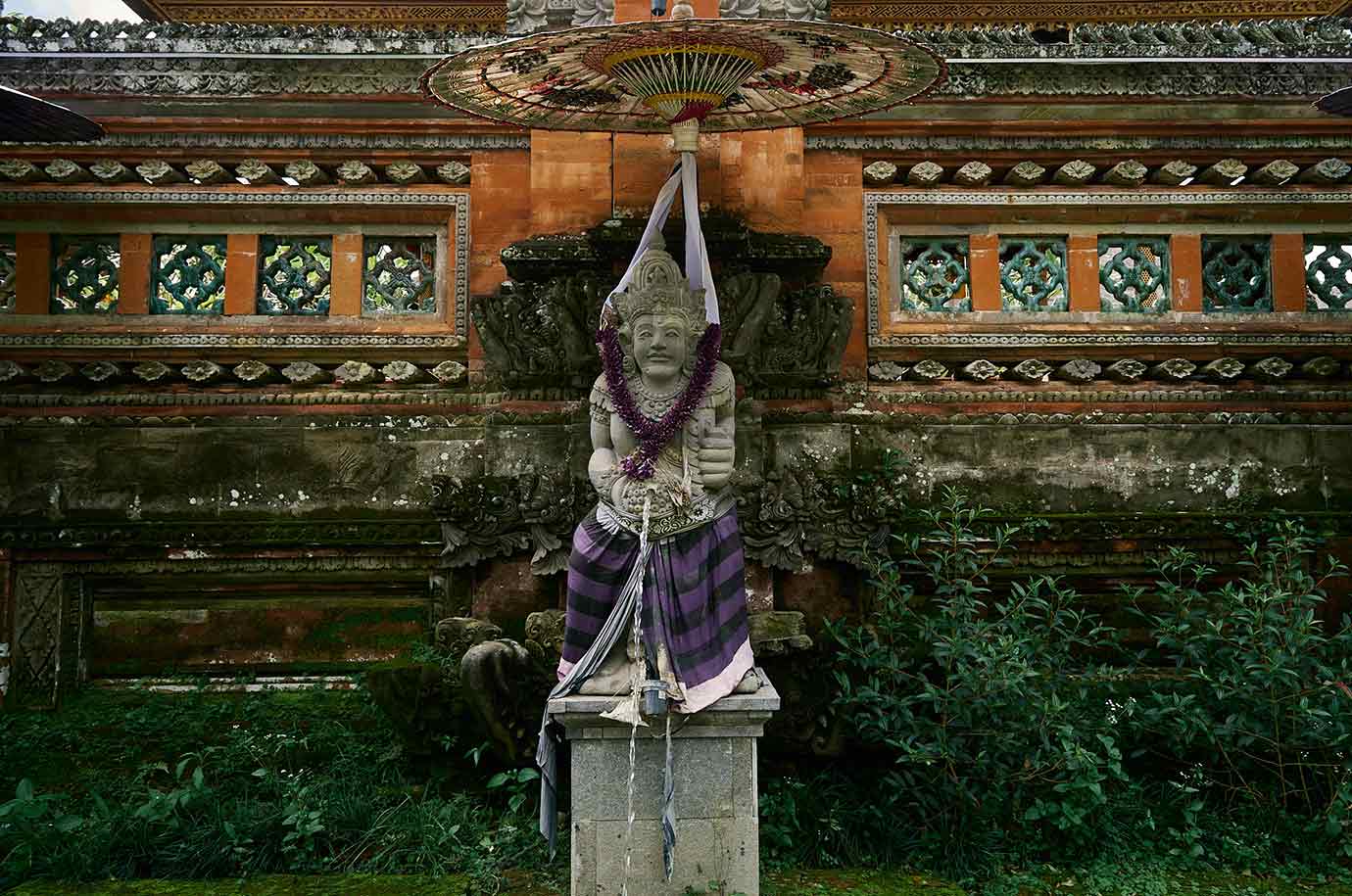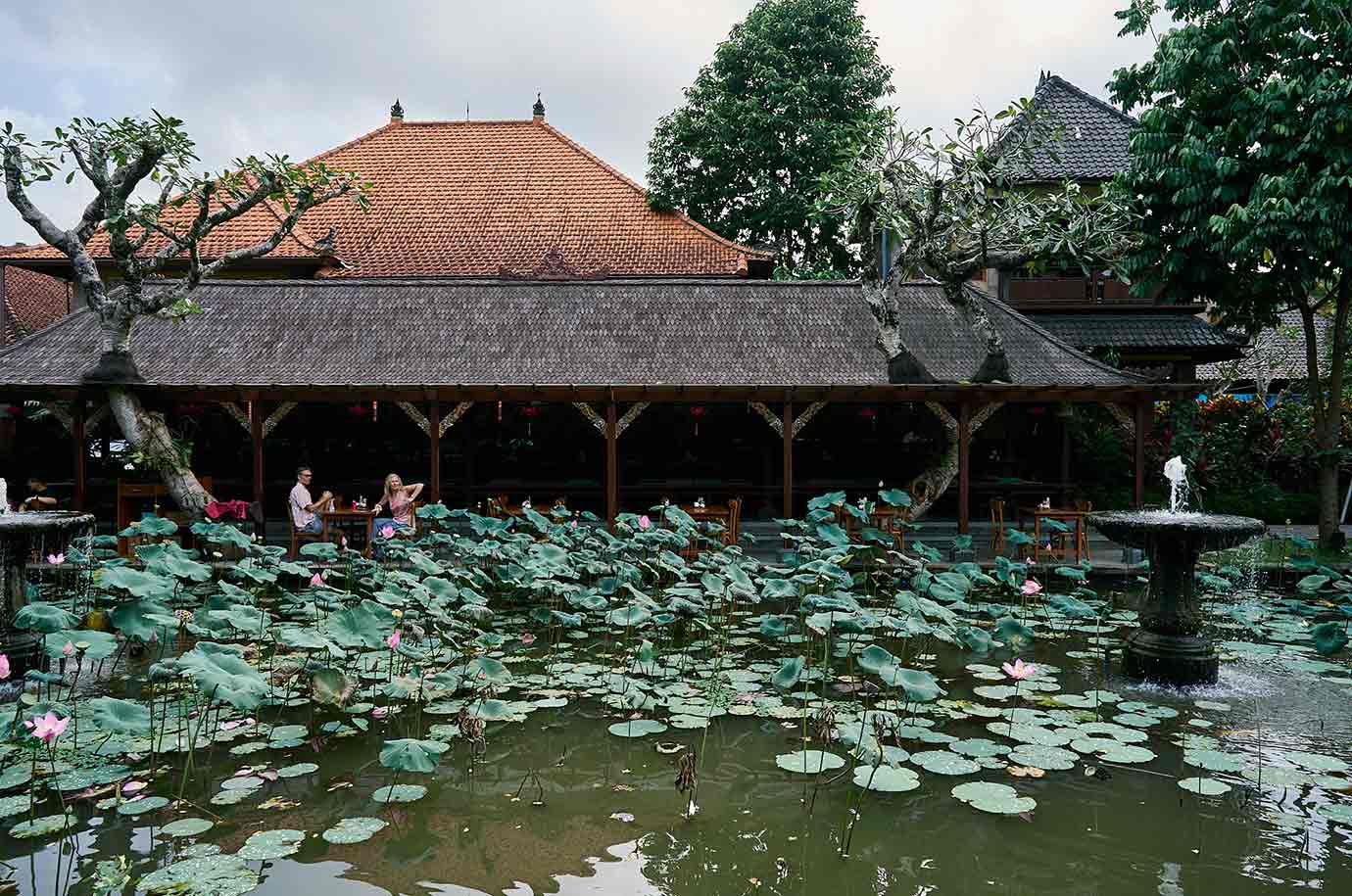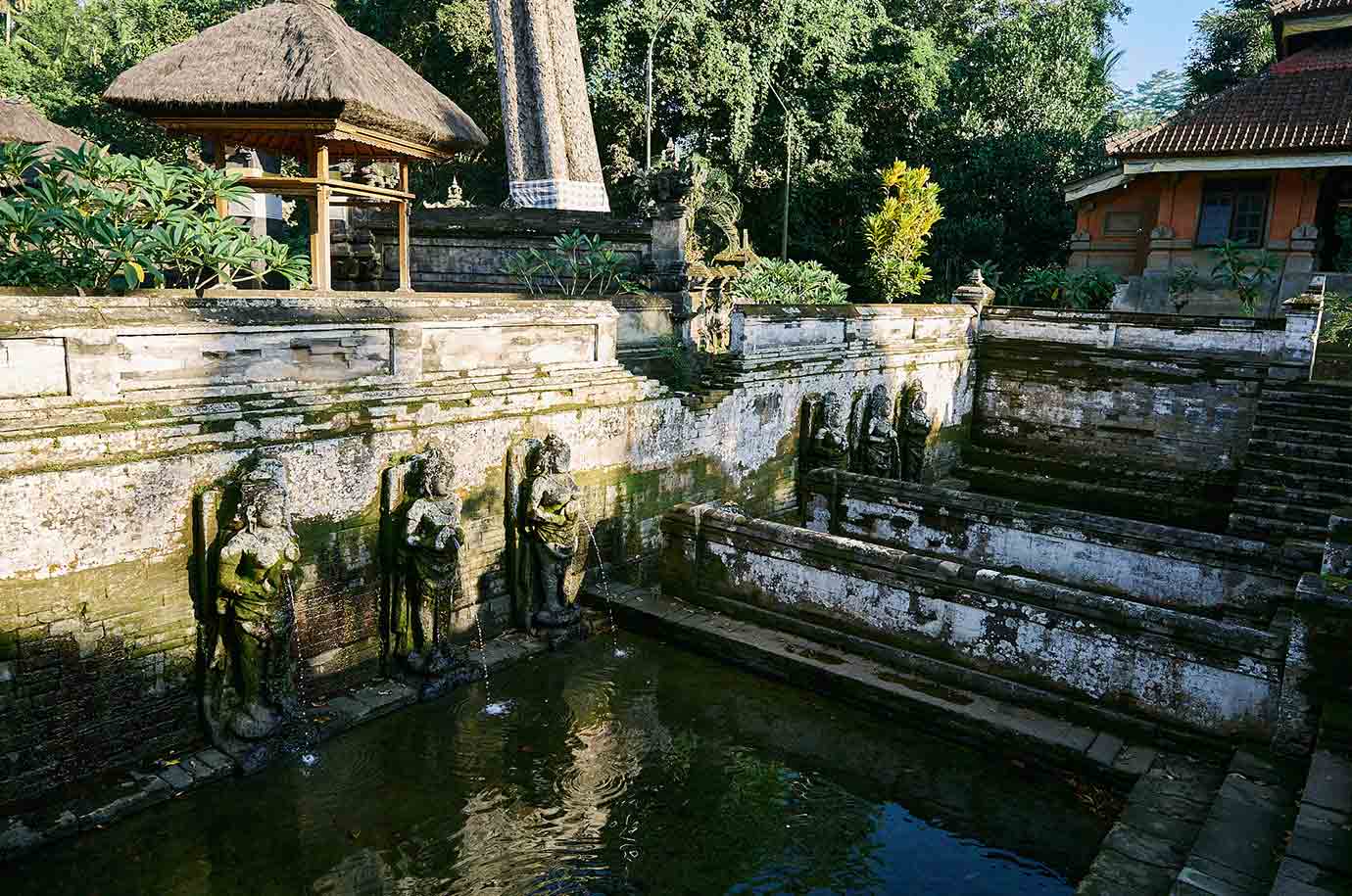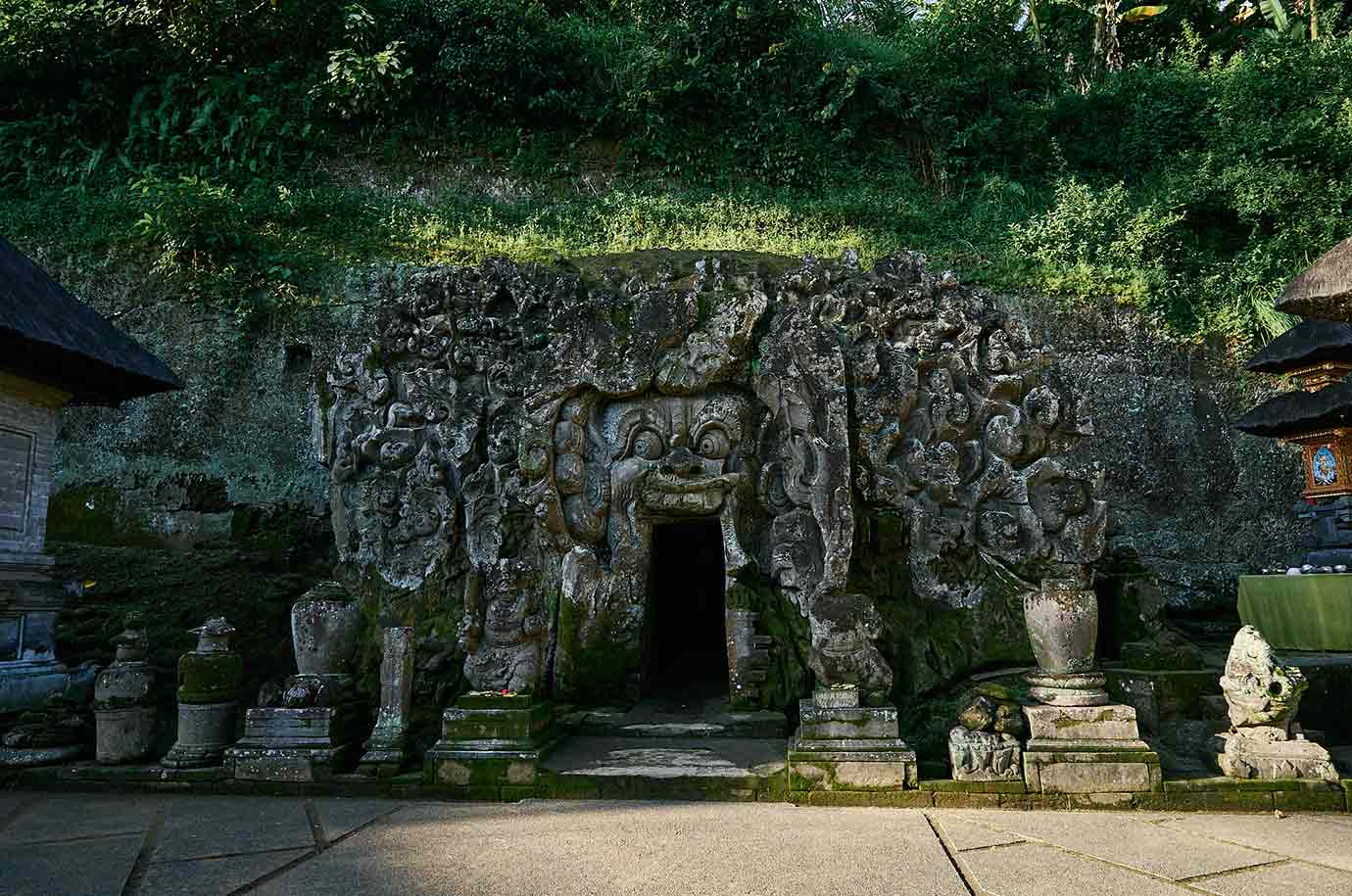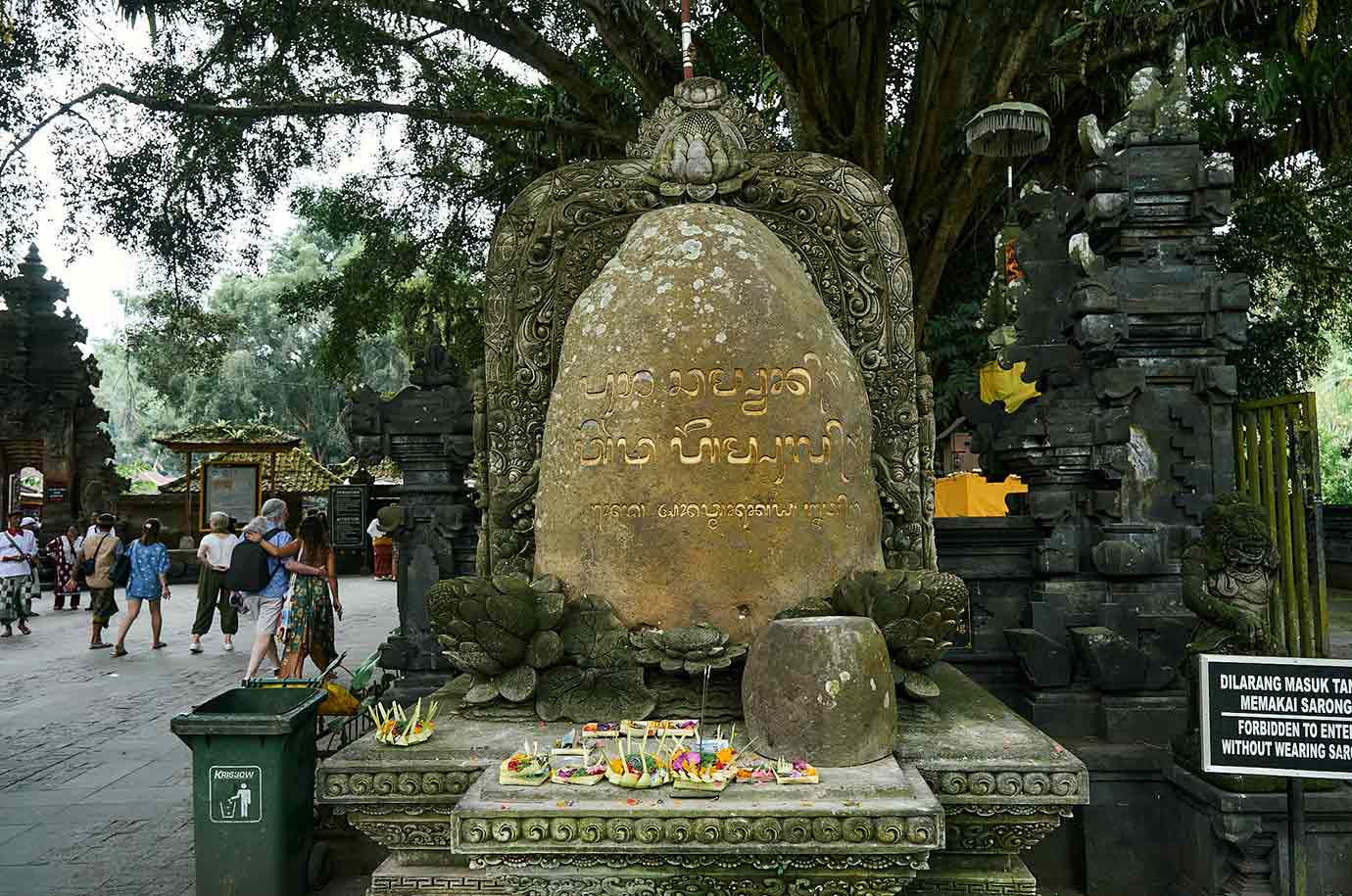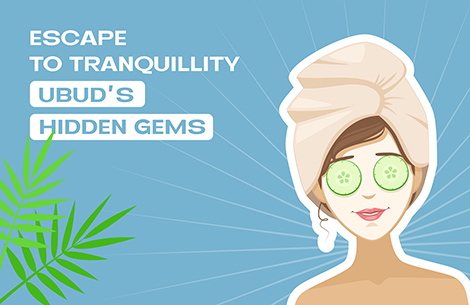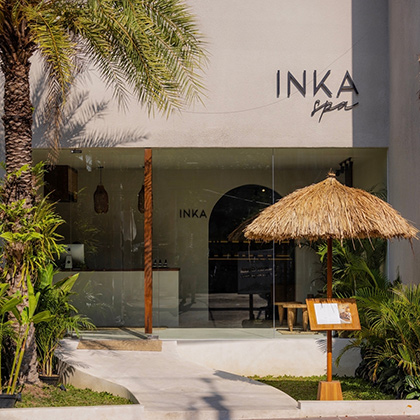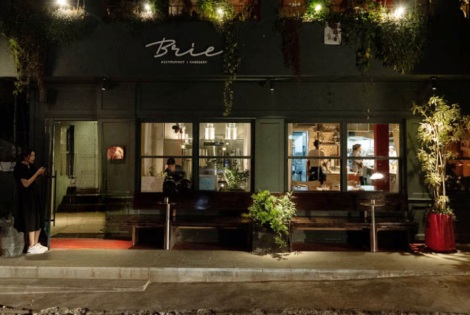The Ultimate Guide to the Best Temples in Ubud, Bali
What makes Ubud so attractive besides the lush rice fields? The temples! Temples in Ubud are more than just worshipping places. They also show how Ubud became Bali's cultural and spiritual axis. In this Ubud travel guide, we’ll show you where you can immerse yourself in the culture as a break from all the yoga classes and plant-based food.

Top 10 Must-Visit Temples in Ubud
Have you ever counted how many temples you see while exploring Ubud? The answer is probably too many. But the ten temples we’ve picked will not only blow your mind with the intricate detail of the architecture and the stone carvings, but some of the temples also hold significance in the Balinese culture. If you’re a history and cultural buff, skipping these temples means you pass up the chance to learn more about Hinduism in Bali.
Get ready to get spoiled with many stories about Balinese Goddesses and Gods through these ten must-visit temples in Ubud!
1. Pura Taman Saraswati
The temple’s other name, Ubud Water Palace, seems fitting because you will see two lotus ponds before the courtyard once you pass the entrance. The Prince of Ubud, Cokorda Gede Agung Sukawati, commissioned renowned artist I Gusti Nyoman Lempad in 1951 to build a temple for Sarasvati, the Goddess of learning, literature, and art.
Mythical Hindu figures like dragons and turtles decorate the intricate carvings of volcanic tuff. You can watch the traditional dance every evening starting at 7 PM. If you’ve never seen any temple, this water temple in Ubud makes a great introduction.
Detailed Information about Pura Taman Saraswati
Entrance Fee: US $4
Location: Google Maps
Opening Hours: 8 AM – 7 PM (Sat – Thu) / 8 AM – 9.30 PM (Friday)
2. Goa Gajah (Elephant Cave)
Ditch the idea of seeing elephants because you won’t see any. The name Goa Gajah originated from Ganesha, the God of learning and wisdom, known to have the shape of an elephant head with four arms. The temple, dated back to the 11th century, was discovered by Dutch archeologists in 1923.
Once you enter the cave, the strong scent of incense, the symbols of Shiva, and the statue of Ganesha will welcome you. The cave is believed to have been built as a meditation place. The scary stone carving at the entrance functioned to ward off evil spirits.
Detailed Information about Goa Gajah
Entrance Fee: US $3.5
Location: Google Maps
Opening Hours: 8 AM – 6 PM
3. Pura Gunung Kawi
Think of 7-meter-high shrines carved into the cliff on the side of the Pakerisan River, and you know why Pura Gunung Kawi stuns everyone who has ever visited. Unlike any other temple, Gunung Kawi is a funerary complex built by the Udayana dynasty in the 11th century.
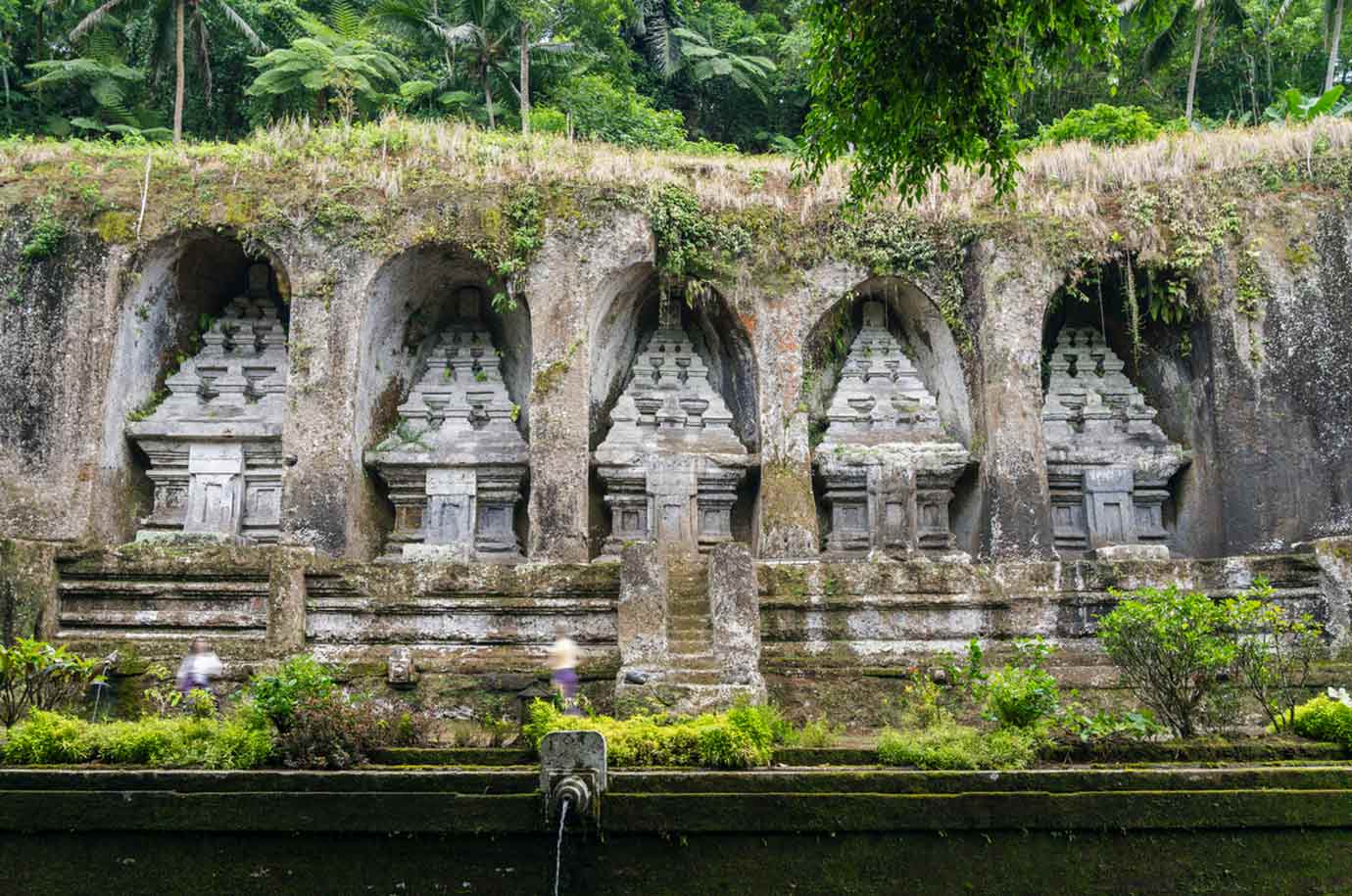 Source: www.istockphoto.com
Source: www.istockphoto.com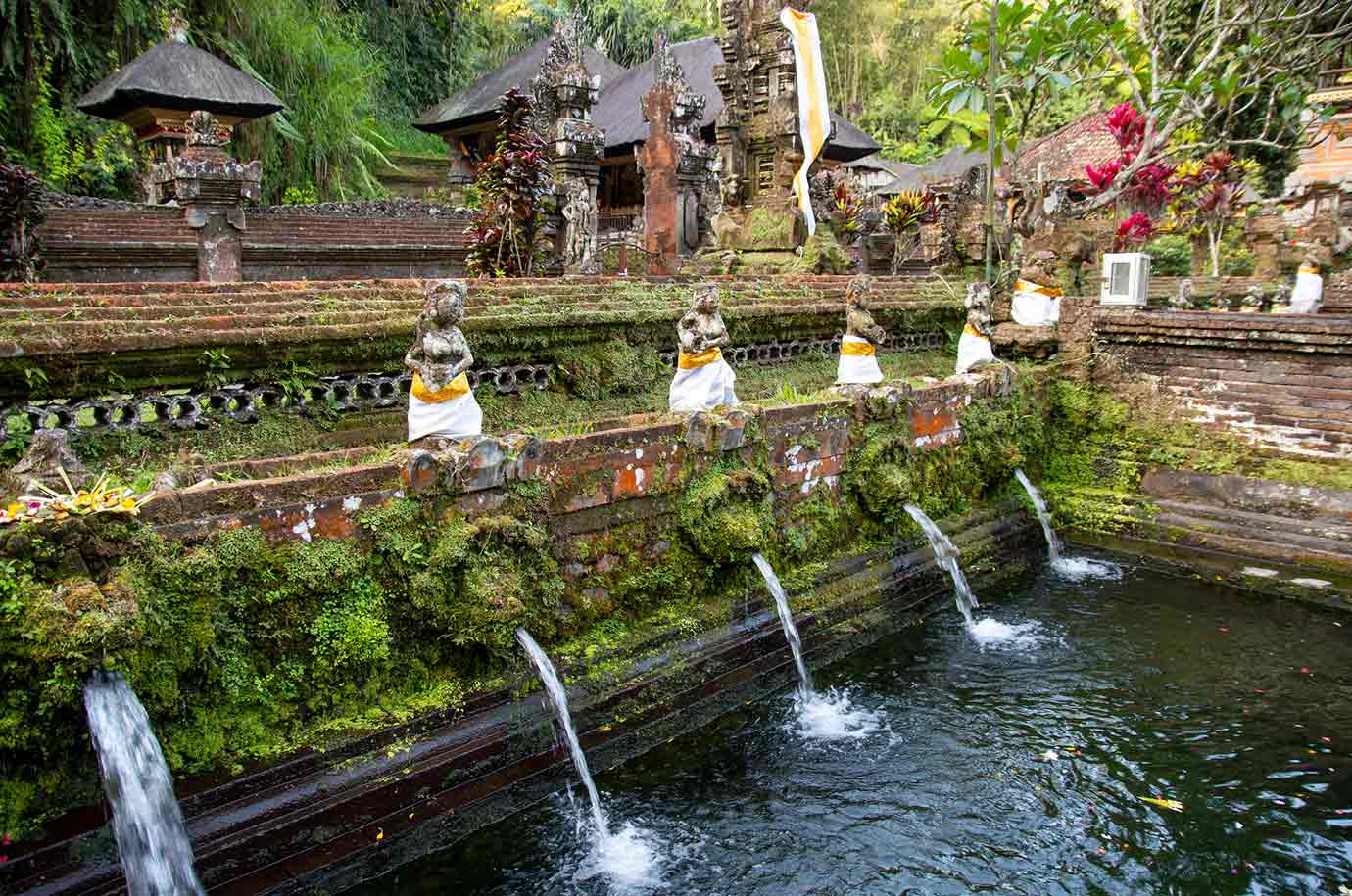 Source: www.istockphoto.com
Source: www.istockphoto.com
You will need to walk the 315 stairs before getting to the ten rock-cut shrines. The rice fields create a peaceful atmosphere. Two rivers, Pakerisan and Bulan, meet at the southern part of the temple, which the Balinese believe to be the places of purification. The locals still use the water for ceremonial purposes.
Detailed Information about Pura Gunung Kawi
Entrance Fee: US $5
Location: Google Maps
Opening Hours: 8 AM – 6 PM
4. Pura Tirta Empul
You visit Pura Tirta Empul not just for the melukat ceremony but also for the history. The temple complex was built in 962 A.D. by the Warmadewa dynasty to worship the Supreme God Vishnu. The temple is divided into three parts and is popular among tourists and locals for the melukat.
Melukat means a purification ceremony to cleanse your body and soul from negative energy. Once you finish a string of rituals, you will wash yourself, which is the final step of the melukat. There’s always a line of people waiting to cleanse their bodies at the 30 spring fountains from the Pakerisan River, so be patient!
Detailed Information about Pura Tirta Empul
Entrance Fee: US $5
Location: Google Maps
Opening Hours: 8 AM – 6 PM
5. Pura Dalem Ubud
Pura Dalem Ubud is all about the underworld since the temple is known as the temple of death. Before you cross the candi bentar or the split gateway as the entrance, the statue of Rangda, with her drooping breasts, fangs, and messy hair, will welcome you.
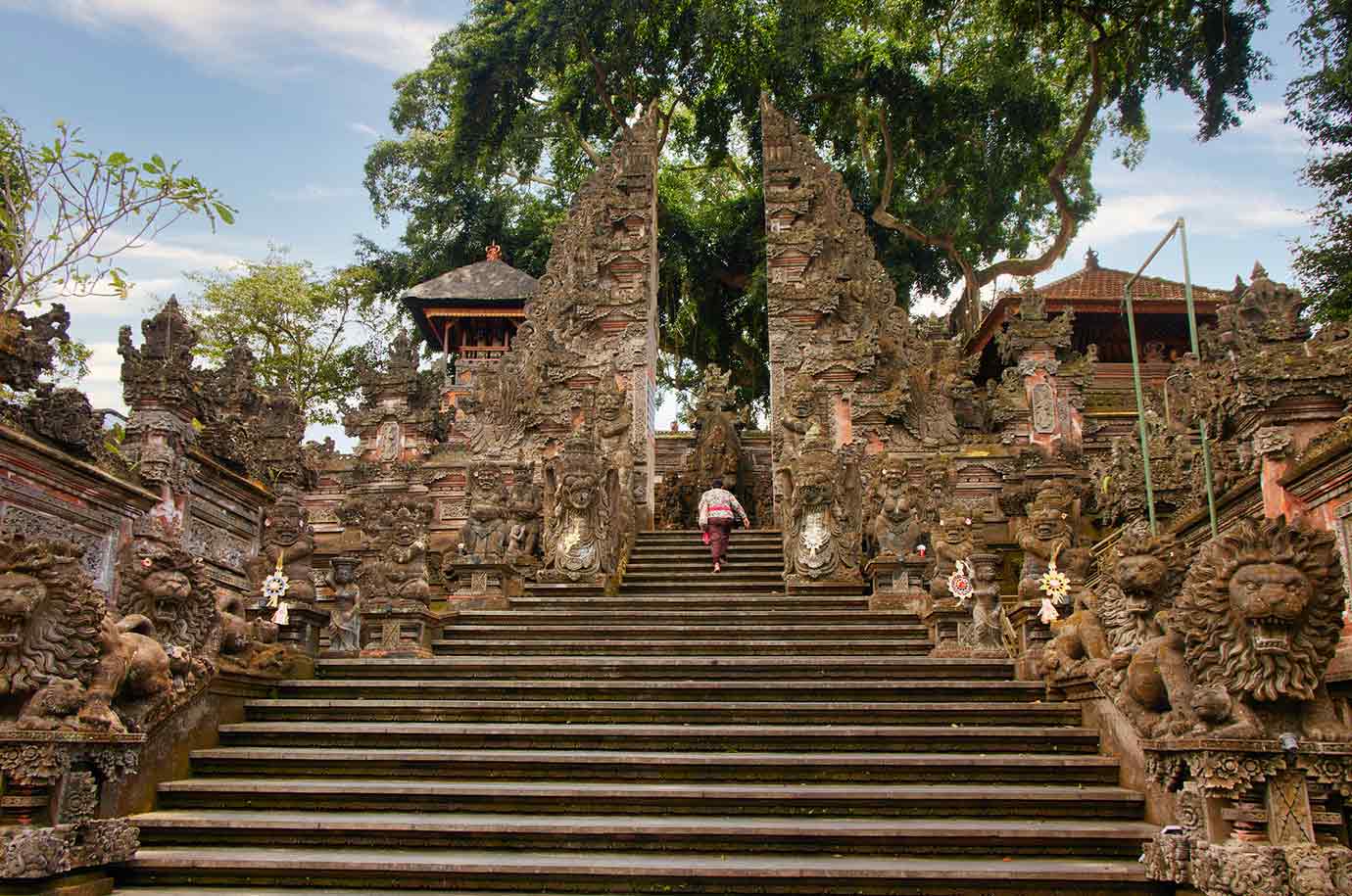 Source: www.istockphoto.com
Source: www.istockphoto.com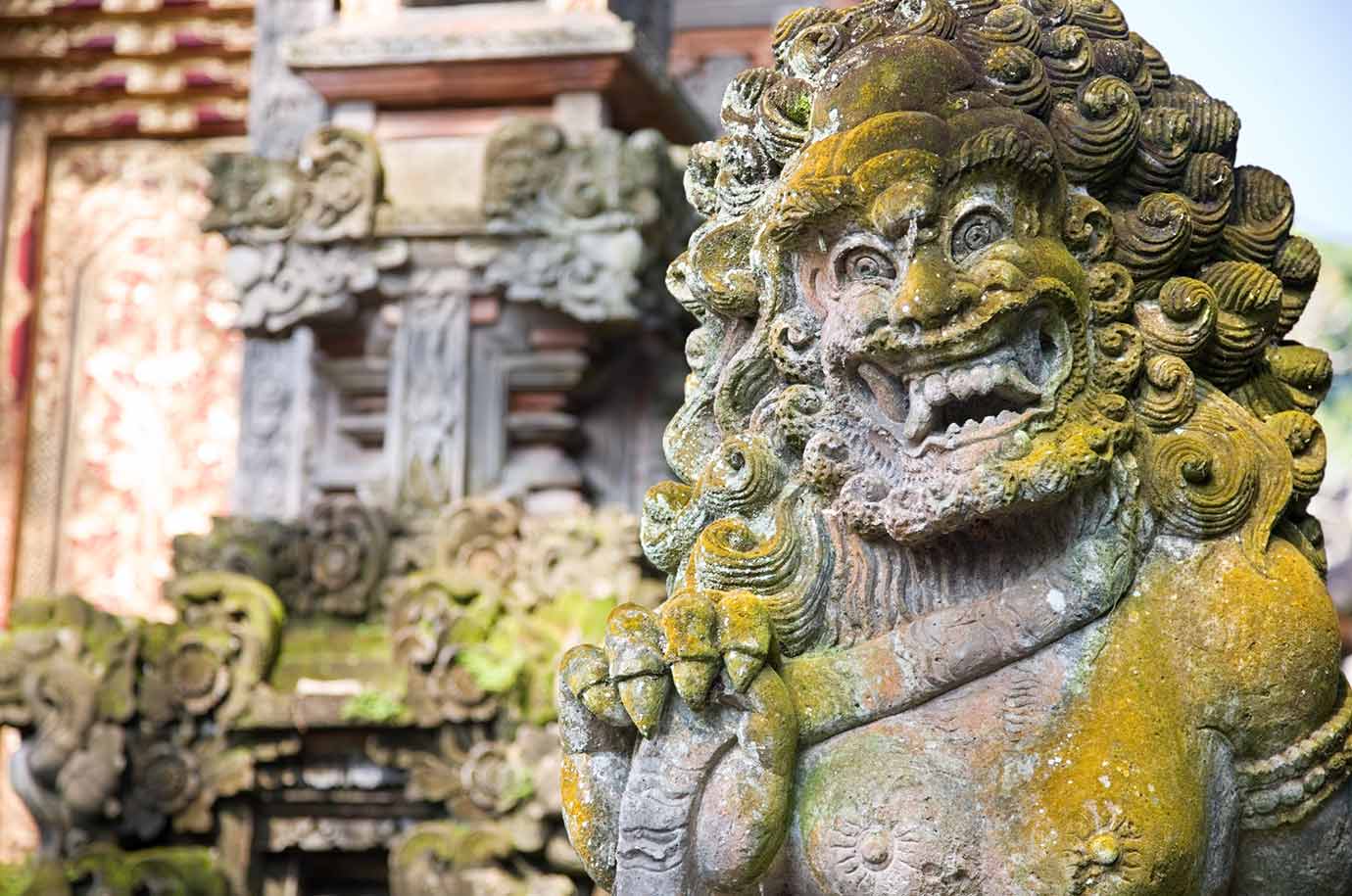 Source: www.istockphoto.com
Source: www.istockphoto.com
Inside, you will find a statue of her holding a baby alongside statues of skulls, angry lions, and other underworld mythological creatures. This temple in Ubud Center makes a great detour after visiting Ubud Monkey Forest, and if you need a spot to see the Kecak Fire dance in the evening, you’ve found a perfect place.
Detailed Information about Pura Dalem Ubud
Entrance Fee: US $1.5
Location: Google Maps
Opening Hours: 9 AM – 5 PM
6. Pura Kehen
Pura Kehen was mentioned in the inscription dated back to the late 9th century. But it wasn’t until the 13th century that the name Pura Kehen was used. In the past, royal officials took oaths in front of the God of Fire (Kehen). Inside, you will find the 11-tier tower, the most sacred shrine in the temple grounds.
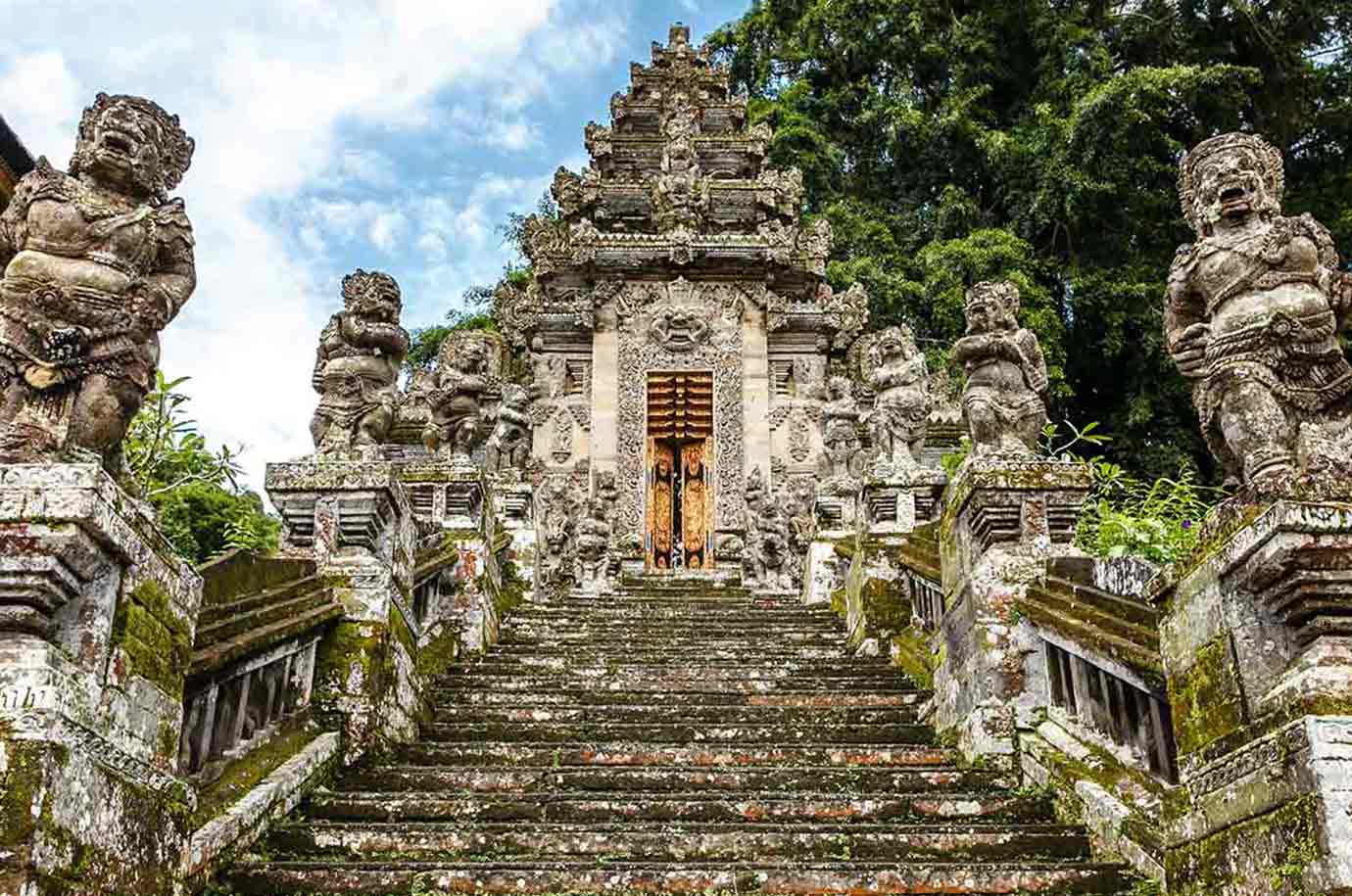 Source: www.istockphoto.com
Source: www.istockphoto.com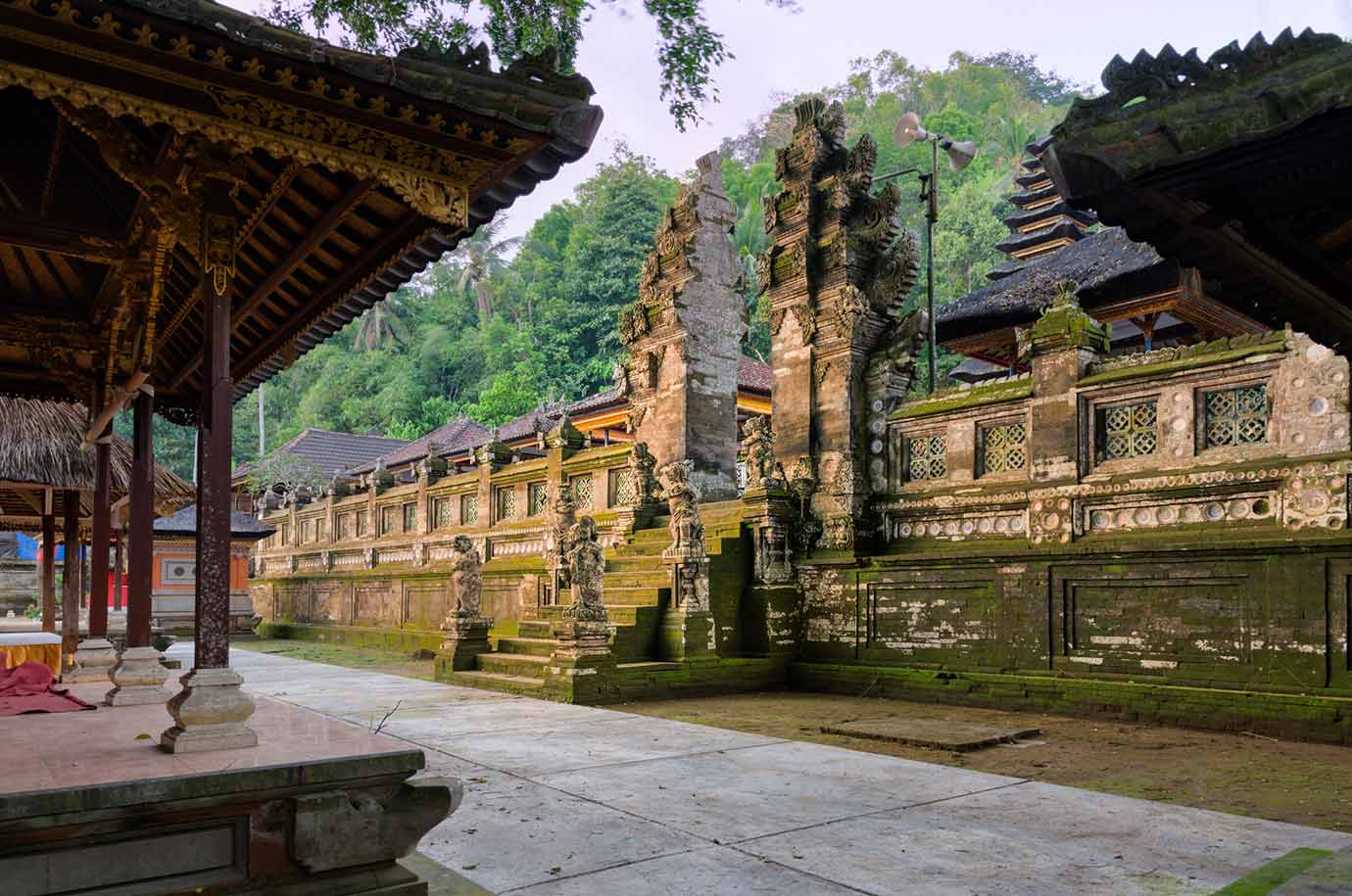 Source: www.istockphoto.com
Source: www.istockphoto.com
The most magical aspect of Pura Kehen is the 400-year-old banyan tree. The locals believe any broken tree branches mean a disaster, usually, the death of a person, is coming. A big ceremony on Pagerwesi Day falls in the temple complex every three years.
Detailed Information about Pura Kehen
Entrance Fee: US $0.7
Location: Google Maps
Opening Hours: 7 AM – 6 PM
7. Pura Penataran Sasih
You come to Pura Penataran Sasih for the Moon of Pejeng, the world's largest single-cast bronze kettle drum. The legend says the kettle drum was one of 13 moons that fell from the sky and shone as bright as the real moon. The myth aside, the kettle drum is used by locals to pray for abundance and luck.
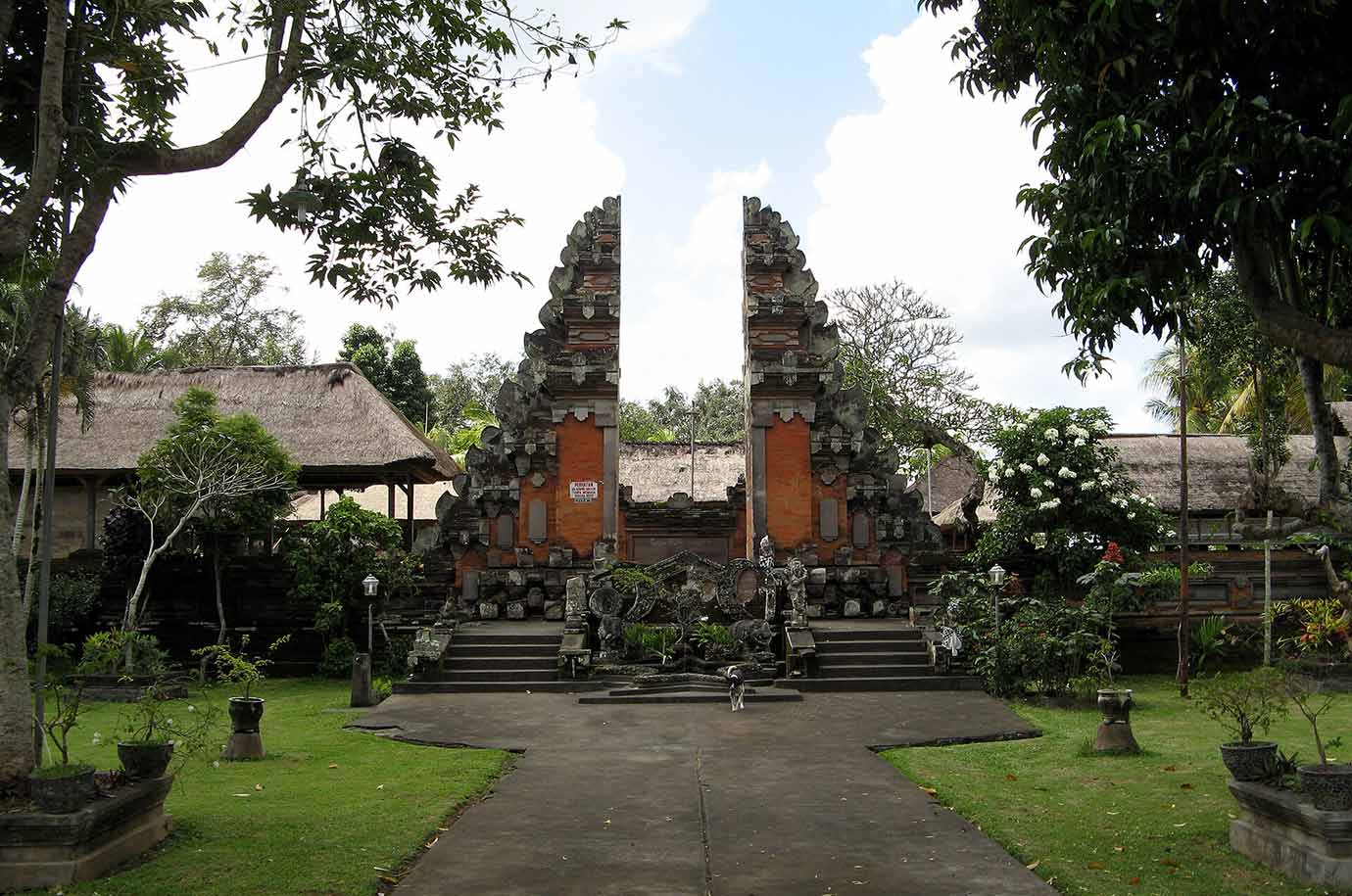 Source: Michael Gunther on wikimedia.org
Source: Michael Gunther on wikimedia.org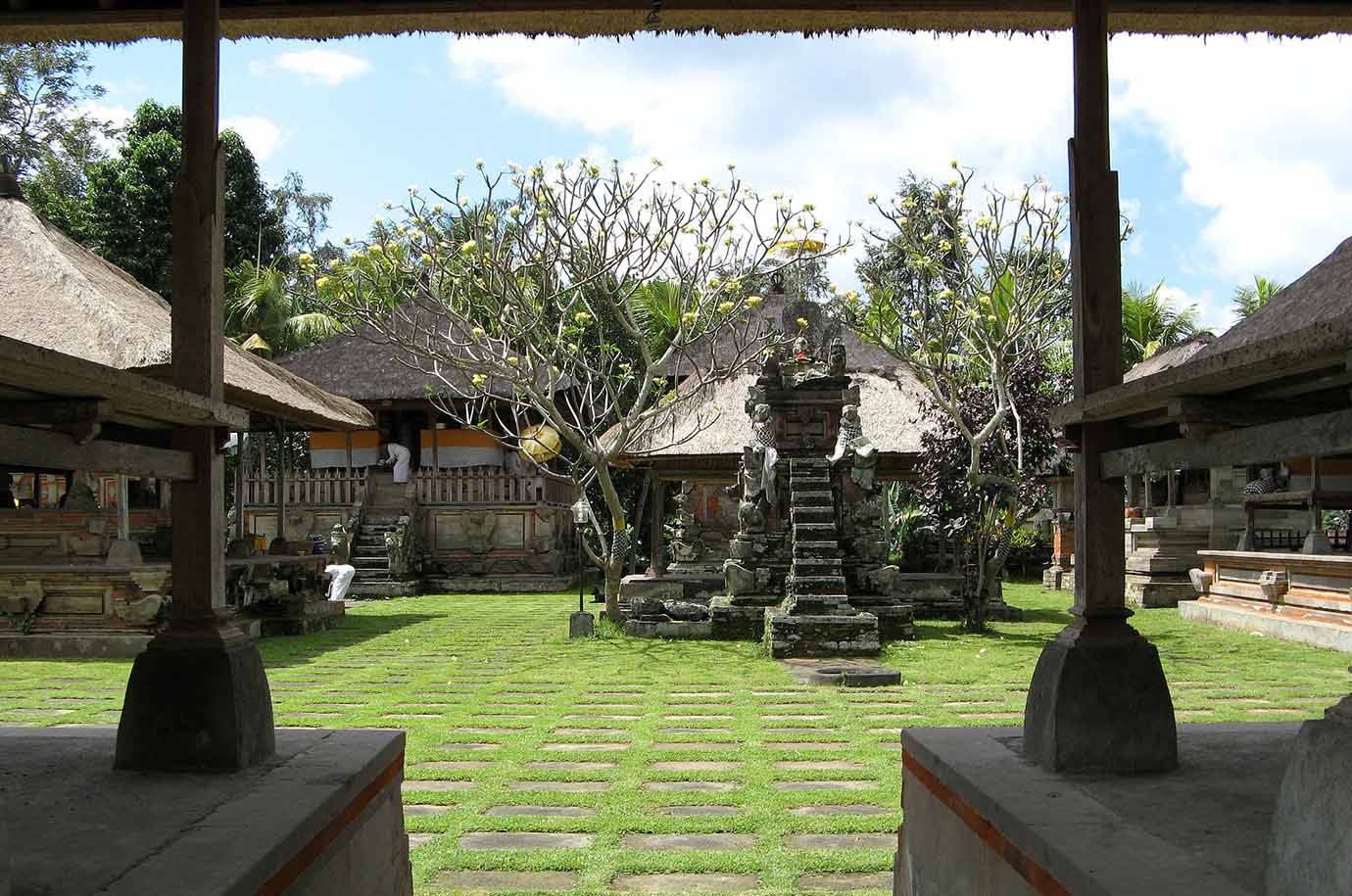 Source: Michael Gunther on wikimedia.org
Source: Michael Gunther on wikimedia.org
The relic from the Bronze Age period is not the only breathtaking thing about this temple built in the 13th century. A series of old Hindu sculptures and a giant stone Seat of Ganesh make Pura Penataran Sasih one of the must-see temples and the most historically-packed temples in Ubud.
Detailed Information about Pura Penataran Sasih
Entrance Fee: US $1.5
Location: Google Maps
Opening Hours: 11 AM – 5.30 PM
8. Pura Samuan Tiga
Once upon a time, nine Balinese Hindu sects had different beliefs, resulting in division and commotion. Pura Samuan Tiga was built as a place of reconciliation among the sects. The temple is also the forerunner of Tri Murti, the highest divine union where the Gods of creator, preserver, and destroyer hold the full power of the universe.
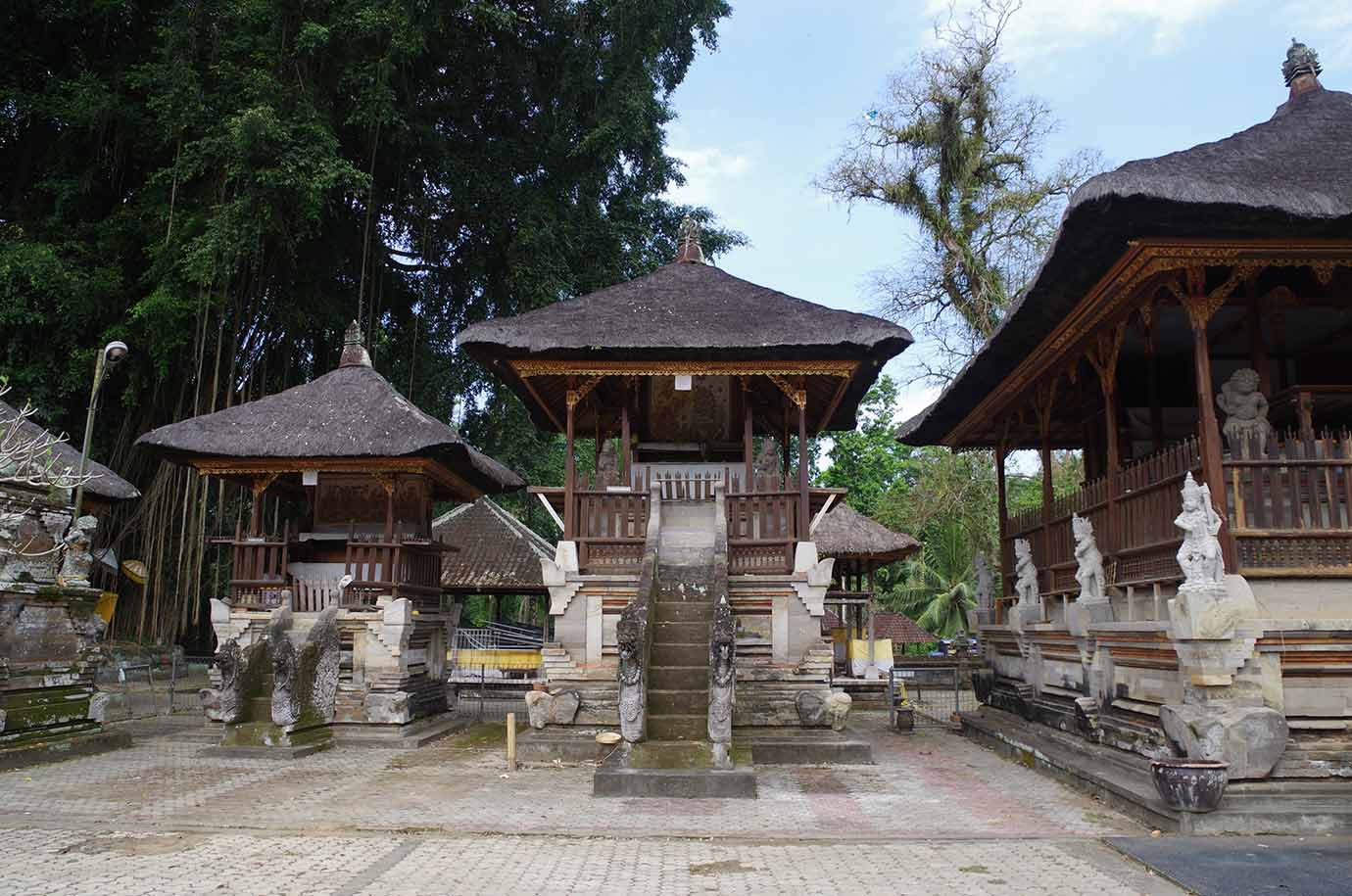 Source: www.istockphoto.com
Source: www.istockphoto.com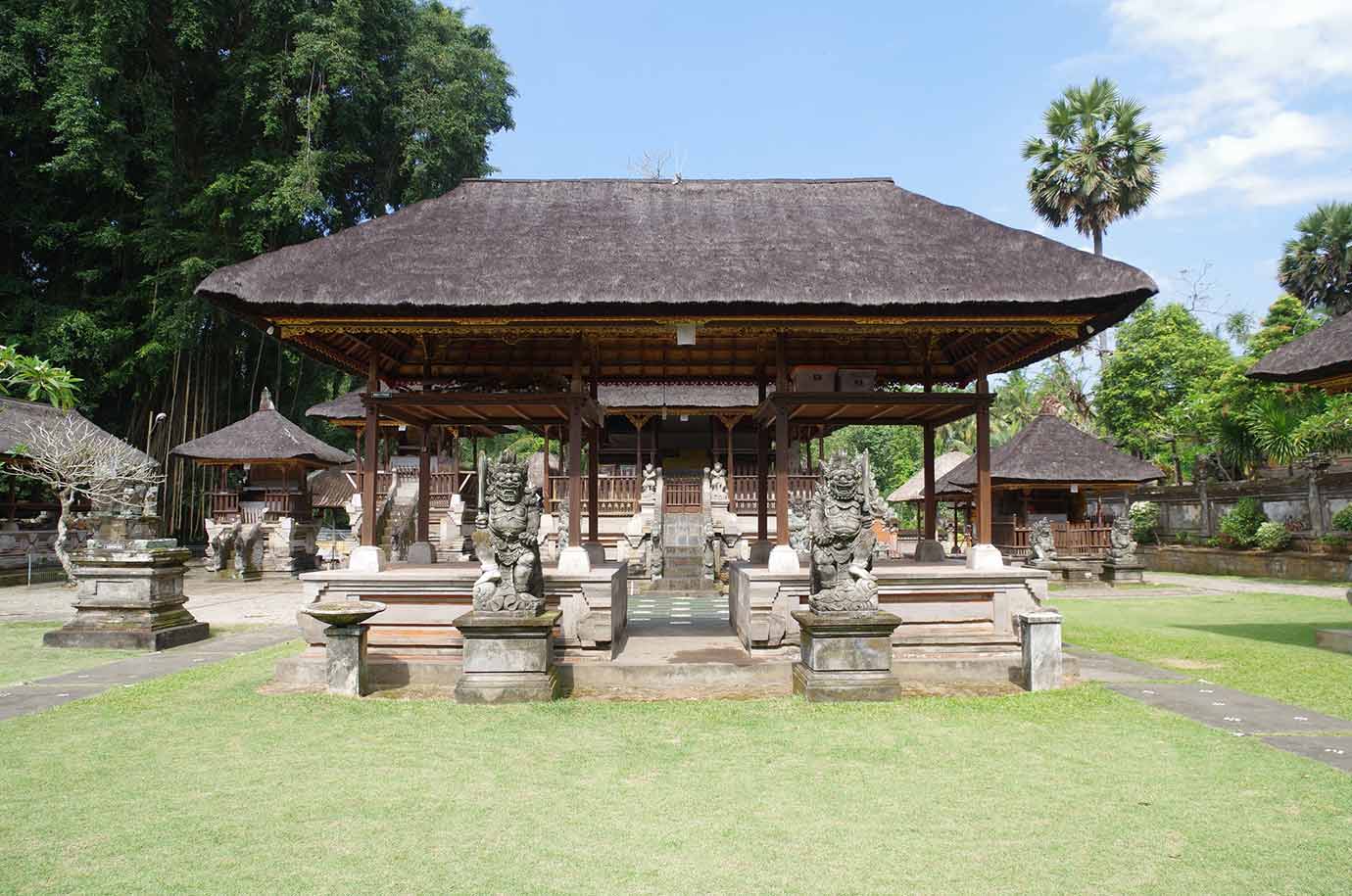 Source: www.istockphoto.com
Source: www.istockphoto.com
One of the unique traditions you can only find here is Siat Sampian. Balinese will dance around the temple while throwing sampian, an ornament made of coconut leaves. The dance symbolizes the battle between the good and the evil.
Detailed Information about Pura Samuan Tiga
Entrance Fee: By donation
Location: Google Maps
Opening Hours: 6 AM – 7 PM
9. Pura Pusering Jagat
The name means the center of the universe because the Balinese believe Pura Pusering Jagat is the beginning of life and civilization. If you see the temple map in Ubud, Pura Pusering Jagat sits in the middle of Bali. In Hindu cosmology, the center is the home of Lord Shiva, the God of Destruction.
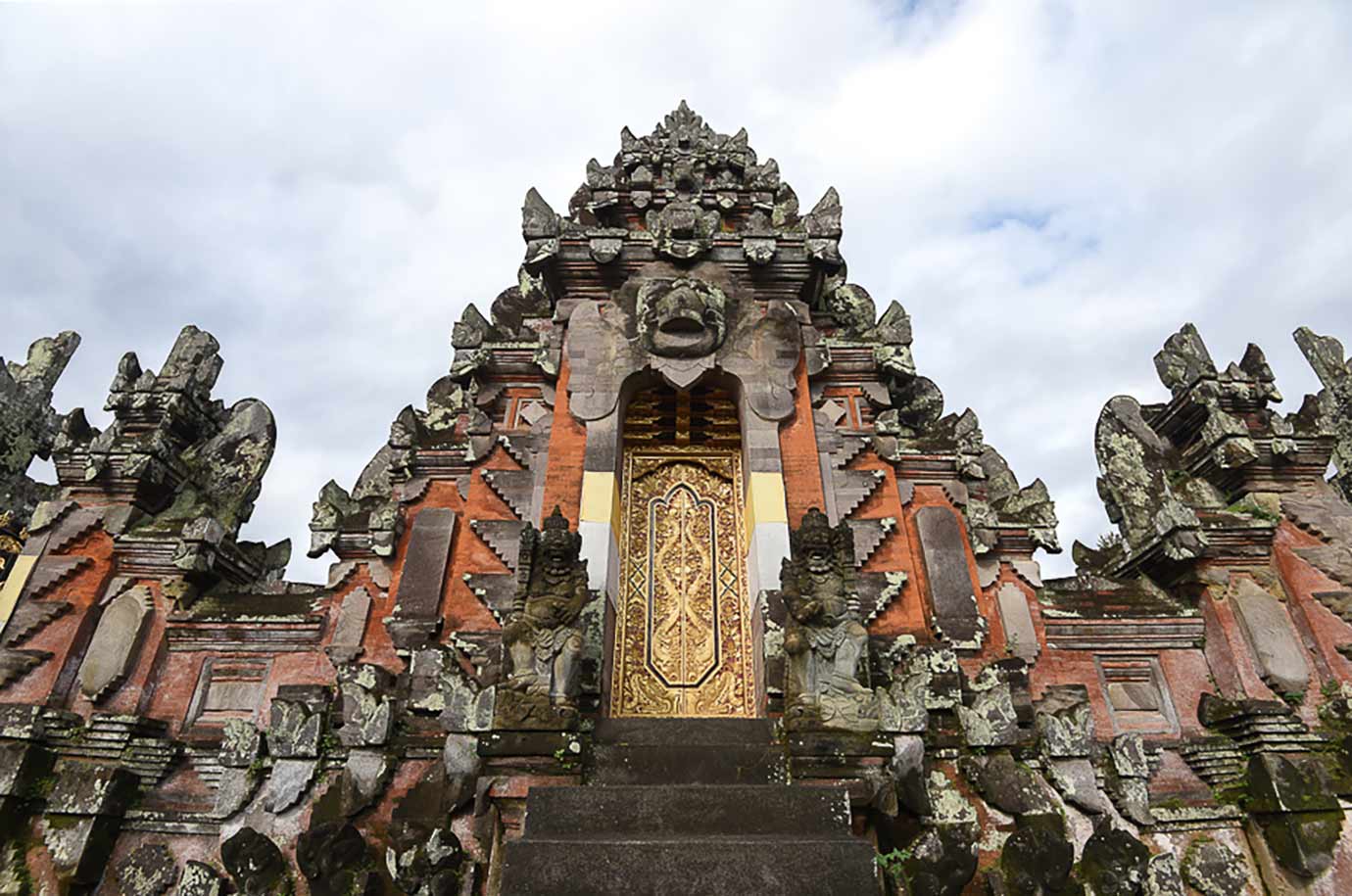 Source: www.orientalarchitecture.com
Source: www.orientalarchitecture.com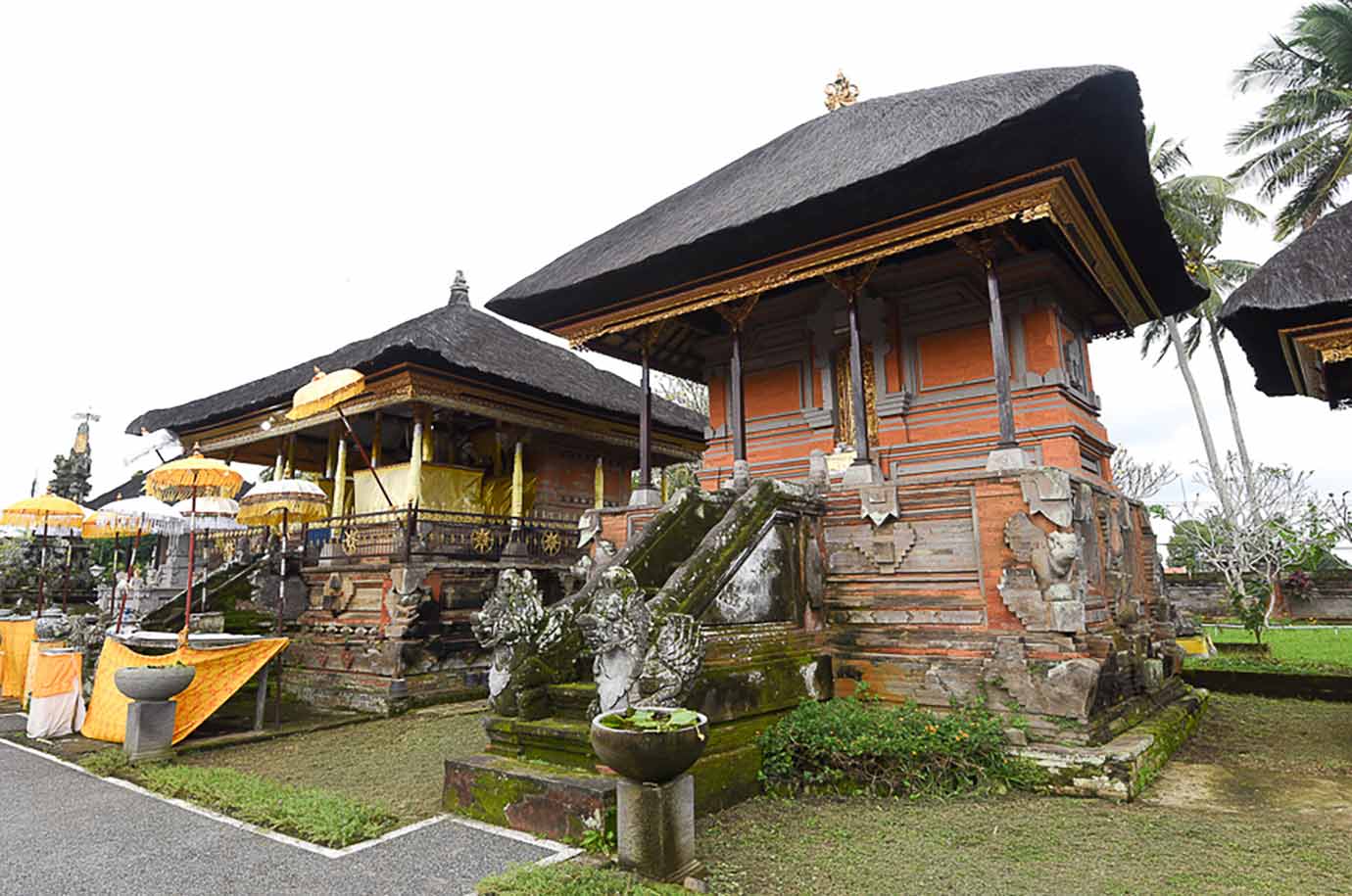 Source: www.orientalarchitecture.com
Source: www.orientalarchitecture.com
A vessel is one of the ancient relics in the temple. The relic, dated from 1251 Shaka year, symbolizes the abundance of holy water. Pura Pusering Jagat is one of the nine temples guarding Bali called Pura Khayangan Jagat, with each temple pointing out where the cardinal points are.
Detailed Information about Pura Pusering Jagat
Entrance Fee: Free
Location: Google Maps
10. Pura Mengening
Don’t skip one of the best temples in Ubud because Pura Mengening will take your breath away. The fountains of water springs are also used for the melukat ceremony but without the crowd, like Pura Tirta Empul. One of the oldest temples in Bali, Pura Mengening, is surrounded by a small waterfall and lush greenery, giving the place a laid-back vibe.
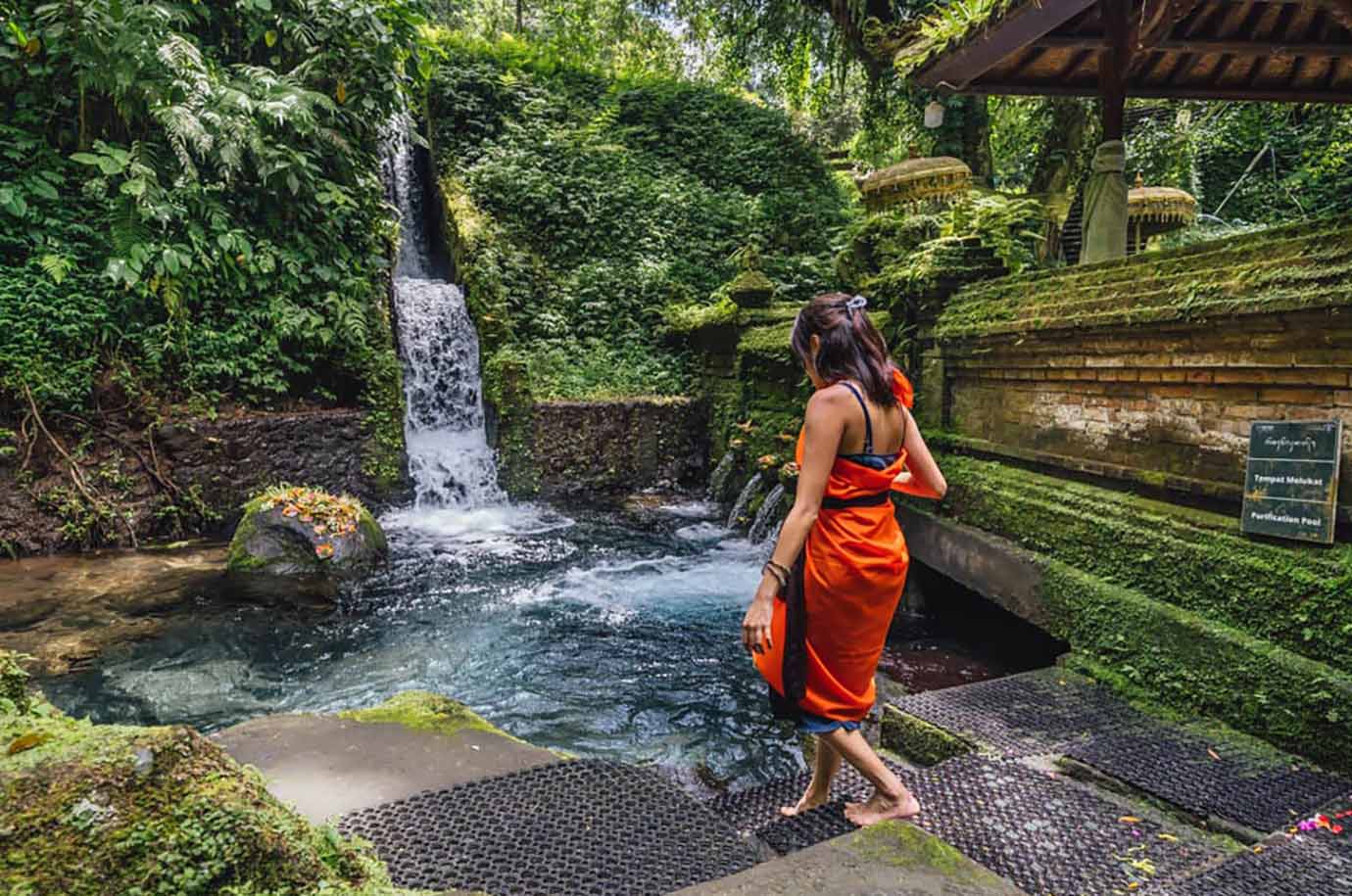 Source: thesmartlocal.com
Source: thesmartlocal.com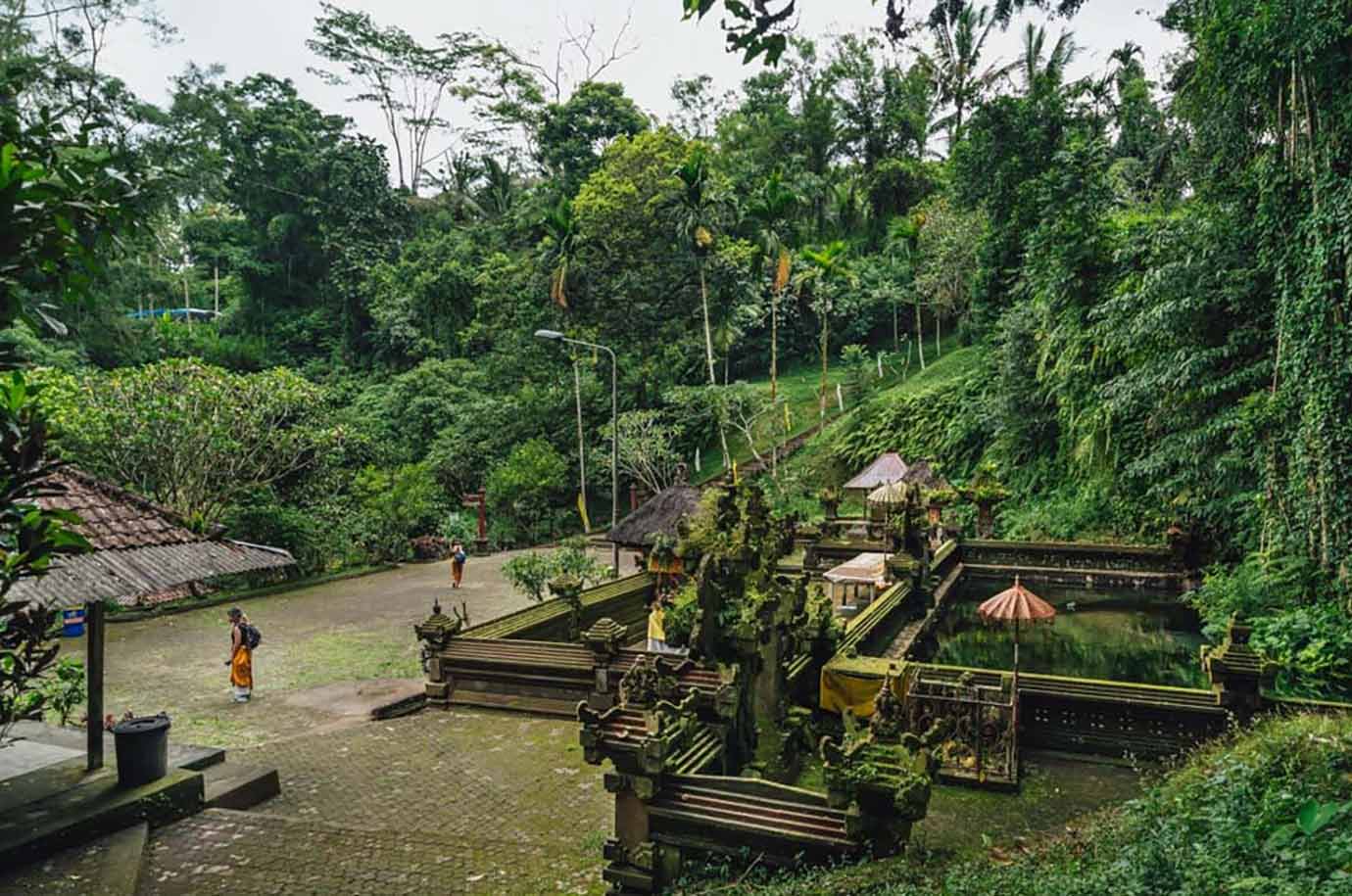 Source: thesmartlocal.com
Source: thesmartlocal.com
Each fountain serves different purposes, including one for melukat and to wash keris or traditional Javanese daggers. At the same time, the name Mengening means clear because the water in the temple complex is always crystal clear.
Detailed Information about Pura Mengening
Entrance Fee: US $2
Location: Google Maps
Opening Hours: 9 AM – 5 PM
Tips for Visiting Ubud's Temples
Before you jump on your motorbike or get inside a car in high spirits to explore the temples we mentioned, there are a few things you need to know. Unlike other attractions in Bali, you can’t swoop in only wearing tank tops and short skirts. Beyond what to wear when visiting the temples in Bali, there are rules to follow.
We share tips on what you can and cannot do while visiting the temple to make sure you have the best time but remain respectful.
Dress Code and Etiquette
If your to-do list for the day includes visiting a temple, prepare a top covering your shoulders and a pants/long skirt covering your lower body. Though the sarong usually comes with an entrance fee, some temples don’t have an entrance fee/donation. You can prepare by bringing a change of clothes.
In general, don’t step on the offerings, do/say inappropriate things within the temple complex, never touch statues when placards say no touch is allowed, and keep your voice low when talking to pecalang (Bali traditional police).
Best Time to Visit
We’ve always recommended visiting temples in the morning, say around 8 to 10 AM. Aside from beating the crowd because most visitors will come in late morning, you don’t have to battle the Bali heat! But if you cannot go right after they open the gate, visiting during the late afternoon is sometimes your best option because we also rarely see the crowd past 4 PM. And the sun’s not too high so you can enjoy every corner of the temple.
Entry Fees and Donations
Some famous temples in Ubud need you to pay the entrance fee, such as Pura Taman Saraswati and Pura Tirta Empul. But you can pay by donation to some of the temples. There is usually a big wooden box near the entrance where you can put the donation. If you aim to visit less popular temples in Ubud, they often have no entrance fee, which means you can explore the complex for free. That’s why we always ask you to bring enough Indonesian Rupiahs just in case you need to pay the entrance fee.
Photography Rules
If you want to take photos, whether for the gram or to make your family jealous, taking pictures at the temples in Ubud or Bali, in general, needs a bit of adjustment. While you can click your shutter anytime, when there’s a ceremony happening, you need to take precautions. Always ask permission first before taking photos of the people or the ceremony. If they say no, please be mindful and considerate. When they give permission, always be careful around the offerings.
During Ceremonies:
Exercise caution and respect.
Always ask for permission before taking photos of people or ceremonies.
If permission is denied, be respectful and do not take the photo.
If permission is granted:
Be mindful of your surroundings.
Avoid disturbing the ceremony.
Be careful around the offerings to avoid displacing or damaging them.
Frequently Asked Questions (FAQ)
You must wear a sarong if you wear clothing that doesn’t fully cover your lower body. Some temples will allow you to come in wearing sleeveless t-shirts/shirts, but some will not. Always bring a sleeve t-shirt/shirt in your bag, just in case. Even if you wear pants/long skirts, you may still need to tie a small scarf around your waist.
Expert Opinion
Beyond the temple’s primary function as a place of worship for Balinese people, what’s great about the temples above is the location. Many of the temples in Ubud are near some of the best waterfalls in Bali. The proximity means you can easily plan a day trip to explore the temples and the waterfalls in one go!
Remember to always follow the dos and don’ts when entering the temple’s complex because there are rules you cannot break. Please respect them even if they seem silly or don’t make sense. Also, have the most incredible time taking snapshots and learning about Balinese culture!

Hi everyone! My name is Catur, and I was born and raised in Central Java. I moved to Bali in 2011 but left the island in 2016 before returning in 2018. Bali feels more than a home to me, and maybe that’s why my name feels like a premonition. Catur means four, both in the Balinese and Javanese languages. It is spoken like ‘c’ in chess, which is also the meaning of my name in Indonesian.
